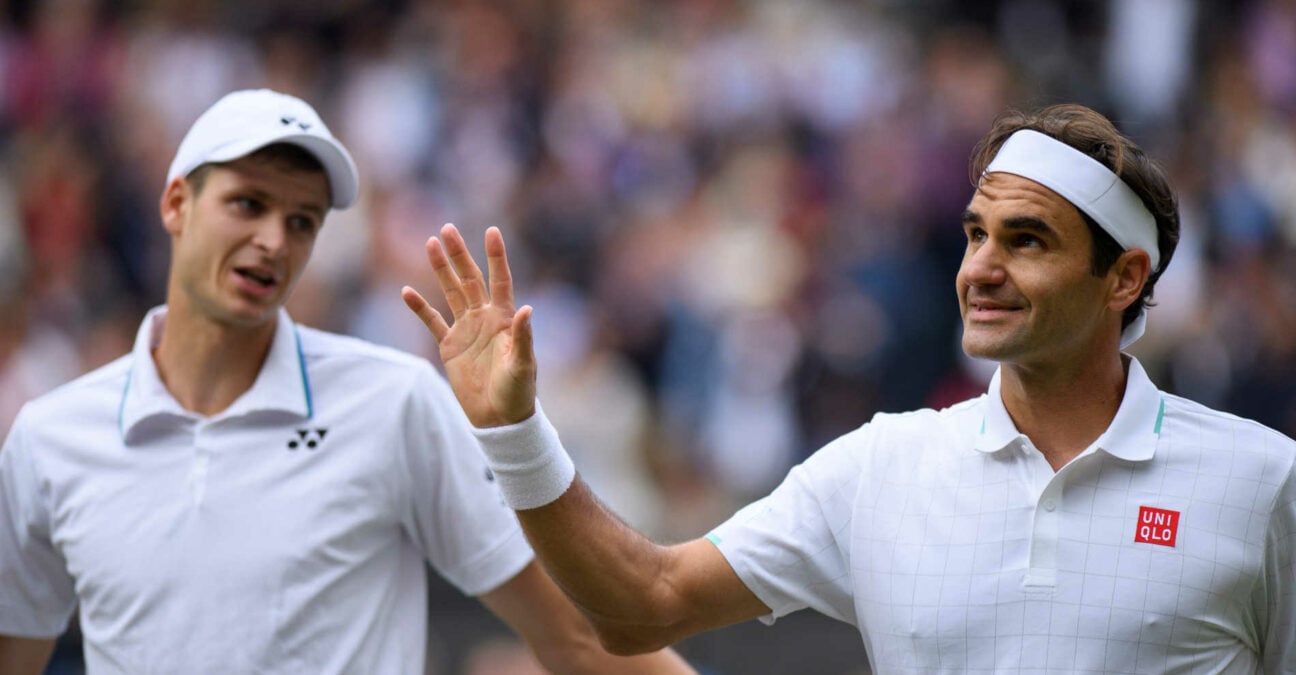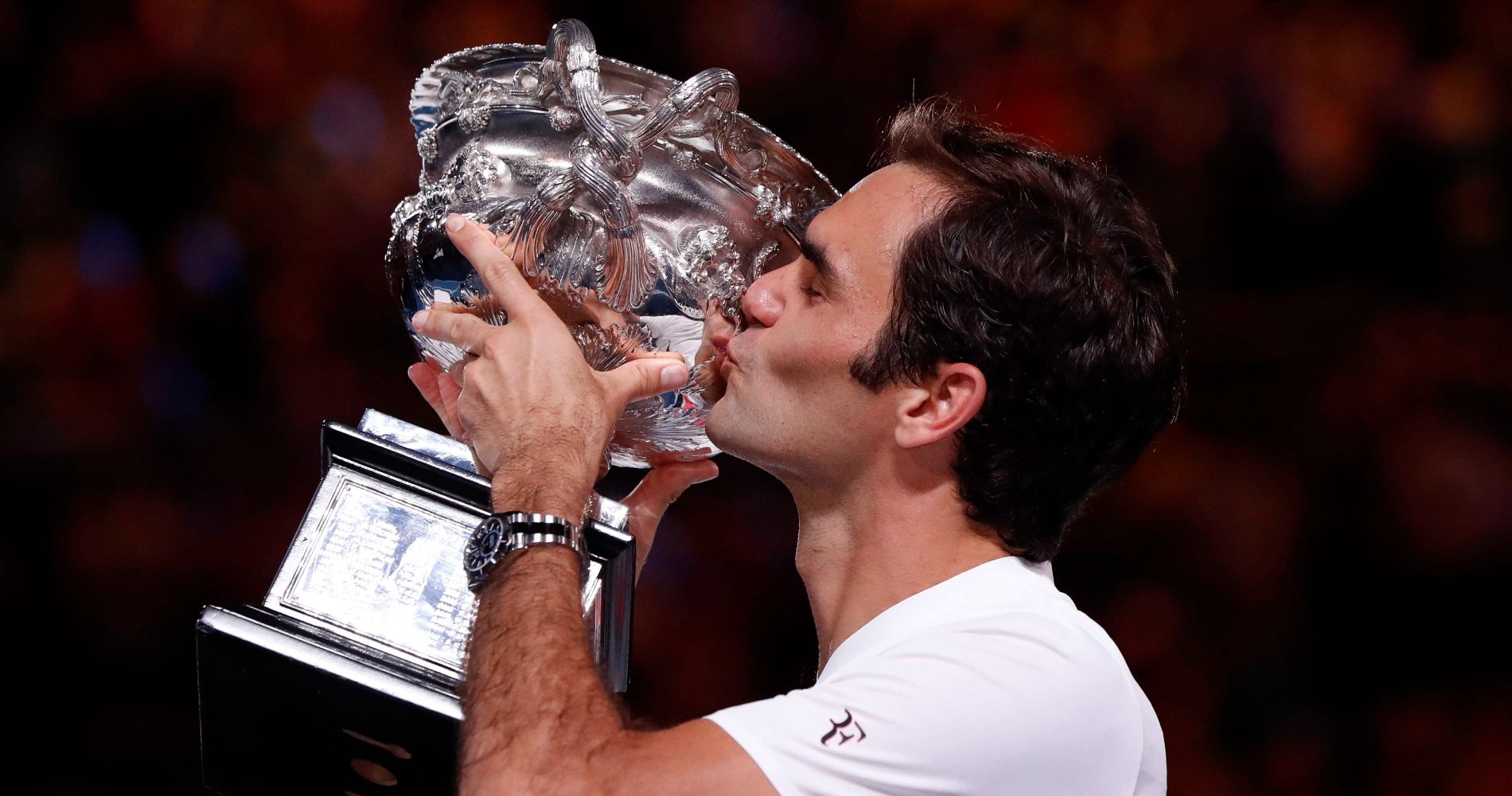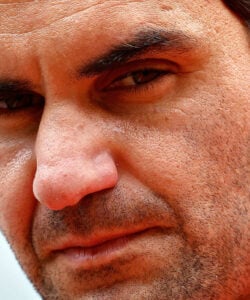The longevity of Roger Federer; fighting time, history and statistics
Roger Federer’s longevity at the top of the tennis world was perhaps one of his best achievements. We look at what he managed, and at the efforts of a few others who played past 40
 Roger Federer’s last match in competition, Wimbledon 2021 | ©
Roger Federer’s last match in competition, Wimbledon 2021 | ©
In July 2019, when he came within one point (twice) of perhaps the greatest achievement of his career at Wimbledon (beating Rafael Nadal and then (Novak) Djokovic in a Grand Slam to win the title), Roger Federer was almost 38 years old. The challenge he faced from the physical laws of top-level tennis was something of a wonder.
The rest of his season – in particular his Masters – and even the start of his 2020 year – a semi-final in Melbourne – reinforced this impression that time had no normal grip on the winner of 20 Grand Slam titles between 2003 and 2018, who was then alone at the top of this race to tennis eternity.
Two and a half years on from his defeat by Djokovic in Melbourne, the picture has taken on wrinkles and girth and on September 15, 2022, after three more knee surgeries in the past 18 months, Federer announced that he is to retire from the sport at the age of 41.
40 is an age at which competitive tennis is not usually an option
His stats in 2021 were unheard of for a player his age, who began his rehabilitation by re-learning to run and climb stairs late in the summer of 2020. Federer won seven of his eight major matches at the French Open and Wimbledon. But his clear defeat in three sets against Hubert Hurkacz, his 6-0 loss in the third set, his lack of mobility and his subsequent withdrawals for physical reasons (Olympic Games and the North American Masters 1000) all point to a stagnation and a level that he was no longer able to push away.
In reality, it was not surprising. Idolised by millions around the world, Federer remains a flesh-and-blood human being, with all the age-related contingencies that some of you players-readers already know – and the rest of you will, too.
Forty is an age at which competitive tennis, especially at the level Federer helped raise it to, together with Rafael Nadal and Novak Djokovic, is not usually an option. The statistics speak for themselves. In some ways, his longevity, at the top level, may be one of his biggest achievements of all.
What the stats say
To the question “What can a top tennis player hope for at the age of 40?” Only two players at that age or more have won matches on the Tour in the past 40 years; Ivo Karlovic, who is still active, and Jimmy Connors, another tennis legend.
The second way of looking at tennis is through the lens of the Grand Slams in the Open Era. While 71 matches in the world’s four biggest tournaments have been won by 40-somethings since 1968, only four of those victories have been since 1978, and here again Karlovic and Connors are the two points of reference.
Croatia’s Karlovic has won nine matches on the ATP Tour since turning 40, including three at Grand Slams. In July of 2021, 139 days after he turned 42, he beat Bernabe Zapata Miralles 6-7, 6-1, 6-4 in the first round in Newport.
Karlovic’s presence at this level – he was 274th in the world and was 88th when he turned 40 – is due to his giant serve (2.11m, 6ft 11in). In Newport in 2021, he hit 24 aces in 15 service games, won 87 percent of the points behind his first serve, 56 percent behind his second and saved all six of his break points. With this array of skills, he reached the last 16 at the Indian Wells Masters 1000 in 2019, the month after he turned 40.
This kind of performance would have been well within the reach of Federer at his eventual current level. His one last aim, it seems, was to play one last successful Wimbledon, but now we know that won’t happen.
Connors, the other 40-something legend
Connors’ case brings us a little closer to that of Federer. The legendary American left-hander has two things in common with Federer; he is the only man to have won more than 100 professional titles (109 for Connors, 103 for Federer), and he too reached a Grand Slam semi-final at a ripe old age.
Connors was 39 at the time of his historic run at the 1991 US Open, while Federer was 38 years and 5 months when he made the last four at the 2020 Australian Open. But there is one notable difference. Connors won his last major at age 31 (1983 US Open) and it was a relentless appetite for competition that propelled his career beyond 35, rather than any quest for a record. Connors had all but disappeared from the top of the rankings in 1990.
Connors had the strength to win eight professional matches after his 40th birthday, including one Grand Slam match in the first round of the US Open in 1992, a three-set victory over Jaime Oncins.
He was 42 years and 296 days old when he won his last Tour match, a round of 16 victory over Martin Sinner in Halle in 1995. Connors’ best Tour result as a 40-something was a semi-final in San Francisco in 1993, aged 41 years and 241 days. Federer would have been that age around Wimbledon 2023 but unless there is some glorious, unexpected comeback, then that’s not going to happen for him.
Federer – Rosewell rivalry for longevity records
The Grand Slams. Let’s talk about them because they are the only ones that really justified the Swiss’ interest as he tried to get himself fit and strengthen his knee in an effort to come back on Tour.
Another Grand Slam victory would have allowed him to break the age record, held by Austrian Ken Rosewall, who won the 1972 Australian Open aged 37 years, one month and 24 days, six months older than Federer was himself when he won the 2018 Australian Open (aged 36 years, five months and seven days).
The records of the Open Era tell us that you can still reach the semi-finals of a major after turning 40, Rosewall having made the semi-finals at the 1977 Australian Open, at 42 years and 68 days old. Federer would have needed to achieve this feat at the 2024 Australian Open (or beyond) to beat it. The other player to achieve this was the American Pancho Gonzalez at the 1968 French Open, a few days after his 40th birthday.
Federer never wanted to break any longevity records just for the sake of breaking them. It would have been tough for him to beat the age record for a match won over the age of 45; the record is held by Ecuadorian-American Pancho Segura, who was born in 1921 and made it through at the 1970 US Open, then played on grass at Forest Hills, at the grand old age of 49 years and 85 days.
If he wanted to match that record, Federer would have to play until the 2031 Australian Open. It didn’t cost anything to make his fans dream with such a distant prospect, until he finally announced his retirement. After all, Karlovic has said that he wants to play until a jubilee event when he turns 50.



















